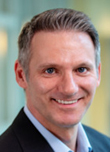Switching From Car T To Car M Changed An Outsourcing Strategy

By Louis Garguilo, Chief Editor, Outsourced Pharma

Inceptor Bio CEO Matthias Schroff laughs when I ask if his cell therapy company is “virtual.” Not at all, he replies, we have about 25 employees, some labs and other research facilities.
Fine, but Inceptor is certainly closer to virtual than they have been.
We learned in part one how the biotech had purchased a former CDMO facility, internalized it, and then turned around and spun it out again as an independent CDMO.
The reasons behind this are scientific in nature.

With less rationalization for maintaining its own cGMP facility, Inceptor effectively moved itself into an outsourcing model. The board hired a new CEO – Schroff – to drive the development of that CAR M program, and that outsourcing strategy.
Model M
Less we forget, outsourcing is in fact fundamentally science-driven. Operating models to achieve successful external partnerships originate within a sponsor’s science and technology.
“Ours is now the model most others follow,” says Schroff of his new manufacturing-less positioning.
“However,” he adds, “We do not outsource everything. We identify gaps we have in-house, and fill them with contractors – CROs and CDMOs – to create the full package necessary to turn science into medicine for patients.”
“Most early-stage cell-therapy companies can't have all capabilities in-house, although that was an earlier model for Inceptor. We are focused now on one development program; it’s too expensive to maintain an under-utilized facility."
Although Schroff emphasis his platform technology can and will expand to other indications, the current CAR M focus is on one indication and a single identified target: GPC-3 for the treatment of hepatocellular carcinoma.
To the uninitiated, the “M” stands for monocytes, a cell type, boasts Schroff, "able to invade solid tumors."
“We modify the monocytes with our CAR molecule that acts like a GPS to find and enter the tumor,” he explains. “There, the monocytes differentiate into macrophages, which are able to eat tumor cells, digest them, and then present tumor-associated antigens to the immune system.”
Importantly, this mechanism of action differs from CAR T. T-cells are effectively those that “kill other cells with a certain target on the surface.” Macrophages, on the other hand, “can present additional antigens to the immune system.”
“It's what we call in situ vaccination, where we generate cytotoxic T-cells able to recognize the tumor and destroy it,” says Schroff.
But now to succeed, Inceptor needs to find external partners who can work on the components, and have the skilled professionals to assist. That could be a tall challenge, but one alleviated, as we learned in part one, but its once internal processing facility now in its employ as a CDMO. Otherwise, CDMOs for the most part still offer limited experience with the science and engineering of these novel programs.
“There really are only a few companies working on this,” and thus limited external knowhow, says Schroff. “But we believe this is a mechanism to overcome limitations of immunotherapy in solid tumors where there is a hostile tumor microenvironment.”
That believe should be strengthened with an anticipated IND by the end of 2024.
But back to the grand “CAR switch,” I press him more on why Inceptor moved focus from their leading CAR T program to the CAR M program – a change of strategy that altered the entire operating model of the company.
Simply explained, replies Schroff, “we are more excited about the underlying mode of action in the solid tumor space with CAR monocytes.”
“We still have the CAR T program, and we are looking for partners interested in moving it forward, but we don't want to utilize our own resources at this point.”
Done This Before
Schroff is a long-time litigant for monocyte science, and a repeat CEO who specializes in development. Both drew him to Inceptor.
“This is part of my background,” he says emphatically. He started working in immunotherapy against cancer since circa 1994. His university diploma and doctor's thesis were related.
“I was sitting in the cell-culture lab and genetically modifying tumor cells generated from a patient, and sending them back to the patient, decades ago. We did cell-based therapeutic trials starting in 1994-95. The company we founded, and where I became CEO, brought a cell-based therapy that was a kind of genetic vaccination utilizing patient’s cancer cells in an allogenic approach.”
In 1998, his PhD professor founded a company where Schroff became first-time CEO (Mologen AG). The idea was to utilize the immune system to treat cancer. Schroff subsequently took up CEO roles in two different companies, Vaximm and Exicure, before joining Inceptor in May (2023).
Along with the scientific focus and CEO roles, another constant for Schroff has been a reliance on a mix of internal innovation and external partners to move programs through development and early-stage manufacturing.
Some of the challenges from his past remain, particularly, he says, “finding early-stage people to work with you.”
“We did a lot of outsourcing at Mologen in Germany, but we also had to do in-house GMP manufacturing,” he says.
“We outsourced raw material production, but that supply chain ended up back at Mologen. We felt the need to establish in-house production and testing to ensure the meeting of strict material specifications.”
The short and long of it is Schroff has learned to mix internal and external capabilities – something I know many readers are wresting with today. In a future column, we'll have the opportunity to learn from serial CEO Schroff about his best practices for selecting and working with CDMOs.
